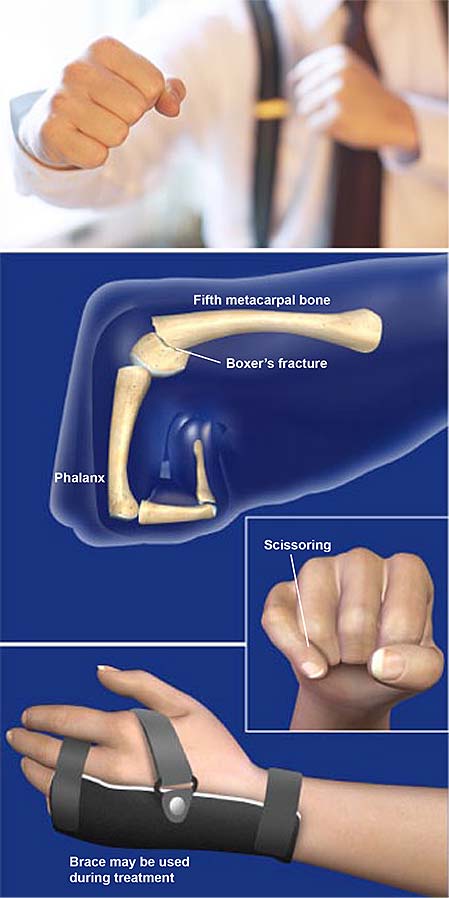FRACTURA DE BOXEADOR
Visión General
La fractura de un boxeador es una rotura del metacarpiano del dedo meñique. Los metacarpianos son los huesos largos de la mano que conectan los dedos con la muñeca. La fractura de un boxeador se refiere a una rotura en el extremo del hueso más cercano al nudillo, que se llama cuello metacarpiano.
 Causes
Causes
Este tipo de fractura ocurre con mayor frecuencia cuando alguien golpea una superficie dura (u otra persona) con el puño cerrado. Dado que la mayoría de las personas golpean en forma circular, el primer punto de contacto con el hueso en un golpe es el hueso metacarpiano del dedo meñique. La fuerza se concentra en el cuello del metacarpiano y provoca una fractura. Irónicamente, esta es una lesión rara en los boxeadores porque están entrenados para golpear con fuerza uniforme en toda la mano, maximizando la fuerza y minimizando las lesiones. La fractura de un boxeador también puede ocurrir cuando una persona tropieza e intenta frenar su caída con el puño cerrado hacia el suelo. Ocasionalmente, un traumatismo directo en la mano también puede causar esta lesión.
Los síntomas
Los síntomas comunes incluyen dolor, sensibilidad e hinchazón alrededor del nudillo del dedo meñique. Moretones y pérdida del contorno de los nudillos son también comunes, y extender el dedo puede ser difícil. En las fracturas severamente desplazadas, los dedos pueden superponerse (o tijera) cuando están flexionados.
Tratamiento
La mayoría de las fracturas de los boxeadores se pueden tratar con un yeso o un aparato ortopédico para estabilizar la fractura mientras sana. Si el nudillo está muy deformado, es posible que se necesite un procedimiento llamado reducción cerrada para empujar la fractura a la posición adecuada antes de colocar el yeso. Para el desplazamiento severo, la tijera de los dedos o múltiples fracturas de metacarpianos, se puede recomendar cirugía.


